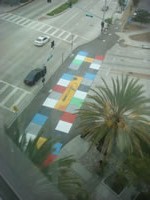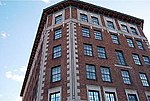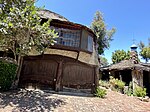Museum of Jurassic Technology

The Museum of Jurassic Technology at 9341 Venice Boulevard in the Palms district of Los Angeles, California, was founded by David Hildebrand Wilson and Diana Drake Wilson in 1988. It calls itself "an educational institution dedicated to the advancement of knowledge and the public appreciation of the Lower Jurassic", the relevance of the term "Lower Jurassic" to the museum's collections being left uncertain and unexplained. The museum's collection includes a mixture of artistic, scientific, ethnographic, and historic items, as well as some unclassifiable exhibits; the diversity evokes the cabinets of curiosities that were the 16th-century predecessors of modern natural-history museums. The factual claims of many of the museum's exhibits strain credibility, provoking an array of interpretations. David Hildebrand Wilson received a MacArthur Foundation fellowship in 2001.
Excerpt from the Wikipedia article Museum of Jurassic Technology (License: CC BY-SA 3.0, Authors, Images).Museum of Jurassic Technology
Venice Boulevard,
Geographical coordinates (GPS) Address Phone number Website External links Nearby Places Show on map
Geographical coordinates (GPS)
| Latitude | Longitude |
|---|---|
| N 34.02586 ° | E -118.395 ° |
Address
Museum of Jurassic Technology
Venice Boulevard 9341
90232
California, United States
Open on Google Maps










